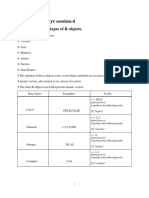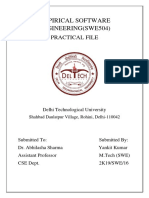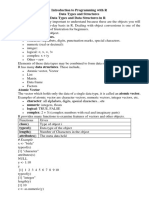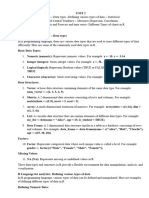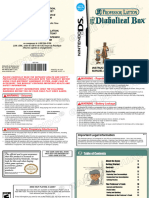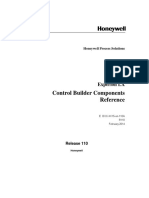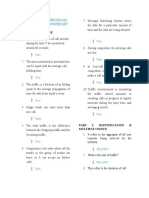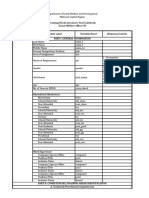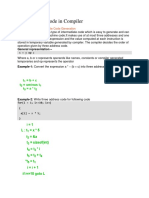0% found this document useful (0 votes)
22 views7 pagesR Data Types 8
The document provides an overview of data types and structures in R programming, including variables, vectors, lists, matrices, arrays, factors, and data frames. It explains how to create and manipulate these objects, as well as the importance of descriptive analysis and measures of central tendency and variability. Additionally, it lists R functions used for statistical analysis and describes the stat.desc() function for obtaining various descriptive statistics.
Uploaded by
arpitasri1305Copyright
© © All Rights Reserved
We take content rights seriously. If you suspect this is your content, claim it here.
Available Formats
Download as DOCX, PDF, TXT or read online on Scribd
0% found this document useful (0 votes)
22 views7 pagesR Data Types 8
The document provides an overview of data types and structures in R programming, including variables, vectors, lists, matrices, arrays, factors, and data frames. It explains how to create and manipulate these objects, as well as the importance of descriptive analysis and measures of central tendency and variability. Additionally, it lists R functions used for statistical analysis and describes the stat.desc() function for obtaining various descriptive statistics.
Uploaded by
arpitasri1305Copyright
© © All Rights Reserved
We take content rights seriously. If you suspect this is your content, claim it here.
Available Formats
Download as DOCX, PDF, TXT or read online on Scribd
/ 7


